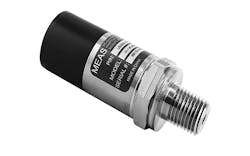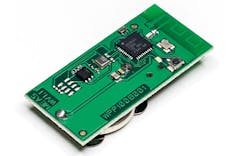For developers and engineers, one of the first and most important questions when creating a new IoT application is the choice of wireless protocol. With a broad range of options to choose from, developers must consider the requirements of their application with regard to range, cost, security, and energy consumption.
While there’s a vast number of options for wireless protocols, a select few have emerged as the most popular and consequential technologies for the development of IoT applications. Based on attractive combinations of usability, cost, and performance, these five protocols represent the leading choices in IoT development. Choosing the right protocol in a given situation is key to an application’s success or failure, as an unsuitable wireless technology can cripple key aspects of the application’s performance and render it unusable.
Wi-Fi
Wi-Fi is undoubtedly the most popular wireless protocol, as demonstrated by its widespread implementation throughout the world. Based on the IEEE 802.11 standards, Wi-Fi offers an easy solution for deploying connected products and consumer goods.
Wi-Fi makes possible simple connectivity in smart-home and smart-building applications and serves a range of up to 100 meters. The protocol communicates using a common international ISM band and offers a high data rate of up to 7 Gb/s. Wi-Fi enables communication among connected devices in smart buildings and is particularly useful for devices that rely on electrical outlets for power.
While suitable for many smart-home applications, Wi-Fi’s high data rate is matched by high power consumption, making it a poor fit for battery low-power IoT applications.
Bluetooth Low Energy (BLE)
Designed for short-range applications, Bluetooth Low Energy is a popular low-cost wireless protocol for many consumer products and smart-building applications. Supported by a majority of smartphone and computer manufacturers, the broad integration of BLE in personal electronic devices makes it an appealing choice for low-power, low-cost IoT applications. The newest BLE 5.0 protocol offers a range of up to 400 meters while simultaneously reducing cost and power consumption compared to previous Bluetooth solutions.
TE’s M5600 Bluetooth Low Energy pressure transducer for remote monitoring and predictive maintenance.
BLE is well-suited for applications that function using a medium data rate, including sensors in smart homes, fitness trackers and other wearables. Like Wi-Fi, it communicates on the international ISM GHz radio frequencies.
Because of its medium data rate, BLE isn’t an advantageous choice for applications requiring file transfers or other significant exchanges of data. It offers a nice option for battery-powered devices in short- to medium-range communication applications.
Zigbee
Popular in industrial applications, Zigbee is based on the IEEE 802.15.4 standard and offers a cost-effective option for small-scale local networks. Unlike Wi-Fi or Bluetooth Low Energy, Zigbee enables the use of mesh networking, allowing sensors and devices to connect to each other over longer distances for the efficient exchange of data. Zigbee delivers a suitable solution for device-to-device networks.
Due to its minimal range and low data rate, Zigbee is effective only for close-proximity local networks. It’s designed specifically for building automation and control, and the protocol is a popular choice for industrial applications and home automation. Protected by 128-bit AES encryption keys, Zigbee is also an appealing choice for applications requiring a secure network.
Because of the protocol’s technological limitations with regard to data rate, range, and power consumption, Zigbee is more appropriate for small-scale powered wireless networks.
LoRaWAN (LPWAN)
LoRaWAN, one of many low-power wide-area-network (LPWAN) protocols, is designed for large-scale public networks. Offering a range of up to 15 km, LoRaWAN is capable of supporting millions of devices on a single network through its low data rate and low power consumption. LoRaWAN works on the ISM sub-giga band and is therefore region-specific, using different frequencies for communication depending on the region. Because of this specification, LoRaWAN will need design specificities for developers choosing to move with their product to different regions.
LoRaWAN’s extended range makes it a useful choice in harsh environments that aren’t conducive to communication, particularly noisy industrial settings. The protocol’s low-cost connectivity is secured by 128-bit AES CCM encryption, and it allows users to select between private networks or operated network solutions in settings like digital factories. The low-power solution offered by LoRaWAN is well-suited for battery-powered IoT devices and can support battery life of 10 years and more, offering bi-directional communication in applications ranging from small-scale industrial settings to smart cities.
TE’s MS8607, HTU21D, and the MS5637 report humidity, temperature and barometric pressure through a standard low power 2.4GHz wireless communication protocol.
Narrowband-IoT (LPWAN)
Like LoRaWAN, Narrowband-IoT (NB-IoT) is an LPWAN protocol that connects devices over a broad area. However, NB-IoT is designed specifically for cellular M2M communications infrastructures, and a SIM card is necessary to communicate through the protocol. NB-IoT is a solution that makes it easy to deploy devices within an operated network. Because of its low data rate compared with other LTE technology, NB-IoT improves the power efficiency of networked devices and can support years of battery life.
NB-IoT is widely used in China and offers a viable option in rural settings due to its extended range. Suitable applications for NB-IoT include agricultural and environmental sensors as well as smart devices like locks, alarms, and smoke detectors.
When compared with LoRaWAN, NB-IoT uses higher bandwidth and power consumption. Because of this key difference, NB-IoT is a more advantageous choice when applications require more data be sent, while LoRaWAN would be preferred for lower data rate and power efficiency.
Empowering IoT Development
Choosing the best wireless protocol empowers an IoT application to succeed in a growing and competitive marketplace. The decision of which protocol to use should largely be guided based on the demands of the application. LoRaWAN would be a better choice in battery-powered, harsh industrial applications with a small amount of data exchange, while applications with larger bandwidth requirements should consider a protocol like Wi-Fi with a tradeoff on power consumption.
Engineers and developers with a clear understanding of the demands of their application should be able to make a straightforward decision regarding the best wireless protocol for their device. Ensuring that an IoT application is supported by the right wireless protocol is a crucial step in creating a practical and profitable IoT solution.
Romuald Gallorini is IoT Sensors Product Line Manager for TE Connectivity.



